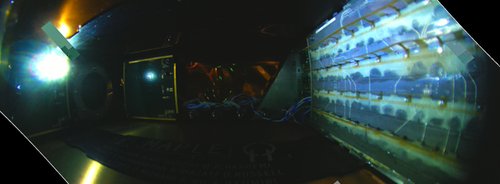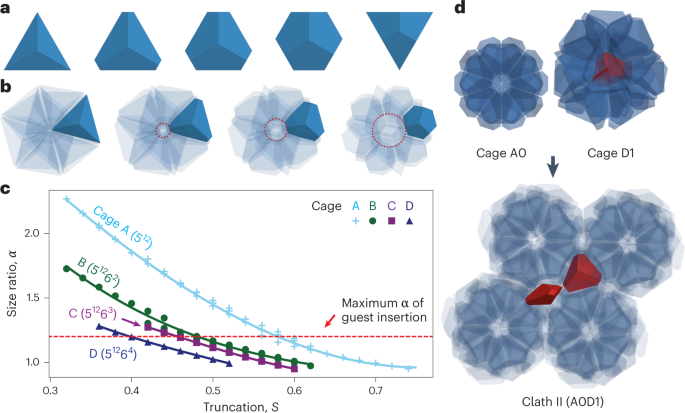2023-05-31 ミシガン大学

◆WASP-18bは木星の10倍以上の質量を持ち、地球から400光年離れた場所にあり、わずか23時間で恒星を周回しています。研究者たちは、WASP-18bが恒星の後方に隠れ再び姿を現すときの「二次の食」を観測し、惑星の温度変動と水蒸気の存在を確認しました。
◆この発見は理論的予測を裏付け、ホットガス巨星の複雑な大気条件に一部を垣間見るものです。また、WASP-18bの明るさのマップから、東西の風が存在せず、磁場の影響が風の方向を制御している可能性も示されました。
◆これらの観測結果は、ジェームズ・ウェッブ宇宙望遠鏡が持つ非凡な感度により、残存する水分子の存在を検出することができたことを示しています。これらの知見は、異常な惑星の起源やその位置づけの謎を解明する貴重な情報を提供しています。
<関連情報>
- https://news.umich.edu/traces-of-water-temperature-variations-confirmed-in-super-hot-gas-giants-atmosphere/
- https://arxiv.org/abs/2301.08192
超高温木星型惑星WASP-18bの広帯域熱放射スペクトル
A broadband thermal emission spectrum of the ultra-hot Jupiter WASP-18b
Louis-Philippe Coulombe , Björn Benneke, Ryan Challener , Anjali A. A. Piette, Lindsey S. Wiser, Megan Mansfield , Ryan J. MacDonald , Hayley Beltz, Adina D. Feinstein Michael Radica, Arjun B. Savel, Leonardo A. Dos Santos, Jacob L. Bean, Vivien Parmentier, Ian Wong, Emily Rauscher, Thaddeus D. Komacek, Eliza M.-R. Kempton, Xianyu Tan, Mark Hammond, Neil T. Lewis, Michael R. Line, Elspeth K. H. Lee, Hinna Shivkumar, Ian J.M. Crossfield, Matthew C. Nixon, Benjamin V. Rackham, Hannah R. Wakeford, Luis Welbanks, Xi Zhang, Natalie M. Batalha, Zachory K. Berta-Thompson, Quentin Changeat, Jean-Michel Désert, Néstor Espinoza, Jayesh M. Goyal, Joseph Harrington, Heather A. Knutson, Laura Kreidberg, Mercedes López-Morales, Avi Shporer, David K. Sing, Kevin B. Stevenson, Keshav Aggarwal, Eva-Maria Ahrer, Munazza K. Alam, Taylor J. Bell, Jasmina Blecic, Claudio Caceres, Aarynn L. Carter, Sarah L. Casewell, Nicolas Crouzet, Patricio E. Cubillos, Leen Decin, Jonathan J. Fortney, Neale P. Gibson, Kevin Heng, Thomas Henning, Nicolas Iro, Sarah Kendrew, Pierre-Olivier Lagage, Jérémy Leconte Monika Lendl, Joshua D. Lothringer, Luigi Mancini, Thomas Mikal-Evans, Karan Molaverdikhani, Nikolay K. Nikolov, Kazumasa Ohno, Enric Palle, Caroline Piaulet, Seth Redfield, Pierre-Alexis Roy, Shang-Min Tsai, Olivia Venot, Peter J. Wheatley
arXiv Submitted on :19 Jan 2023
DOI:https://doi.org/10.48550/arXiv.2301.08192
Close-in giant exoplanets with temperatures greater than 2,000 K (”ultra-hot Jupiters”) have been the subject of extensive efforts to determine their atmospheric properties using thermal emission measurements from the Hubble and Spitzer Space Telescopes. However, previous studies have yielded inconsistent results because the small sizes of the spectral features and the limited information content of the data resulted in high sensitivity to the varying assumptions made in the treatment of instrument systematics and the atmospheric retrieval analysis. Here we present a dayside thermal emission spectrum of the ultra-hot Jupiter WASP-18b obtained with the NIRISS instrument on JWST. The data span 0.85 to 2.85 μm in wavelength at an average resolving power of 400 and exhibit minimal systematics. The spectrum shows three water emission features (at >6σ confidence) and evidence for optical opacity, possibly due to H−, TiO, and VO (combined significance of 3.8σ). Models that fit the data require a thermal inversion, molecular dissociation as predicted by chemical equilibrium, a solar heavy element abundance (”metallicity”, M/H = 1.03+1.11−0.51 × solar), and a carbon-to-oxygen (C/O) ratio less than unity. The data also yield a dayside brightness temperature map, which shows a peak in temperature near the sub-stellar point that decreases steeply and symmetrically with longitude toward the terminators.



